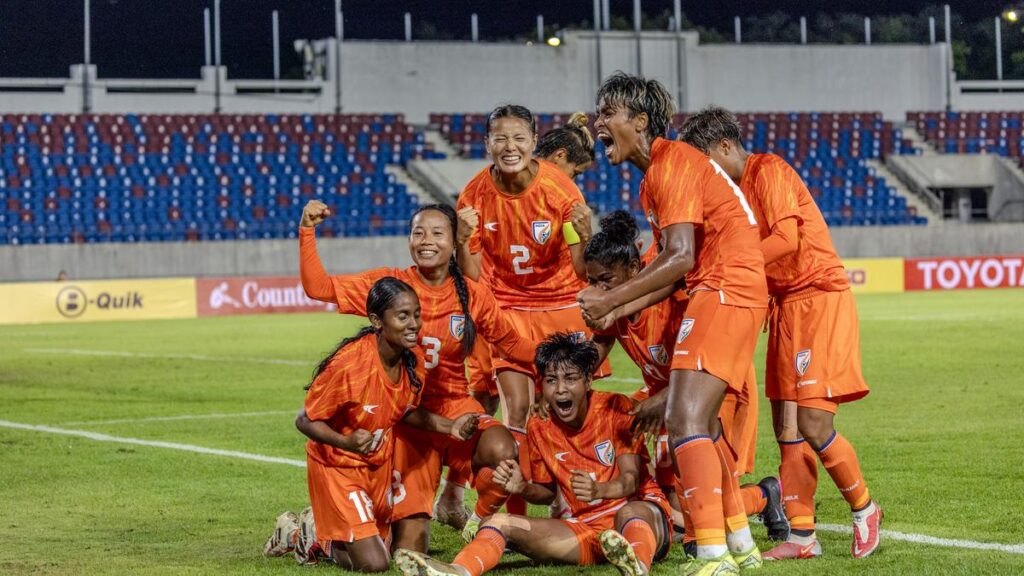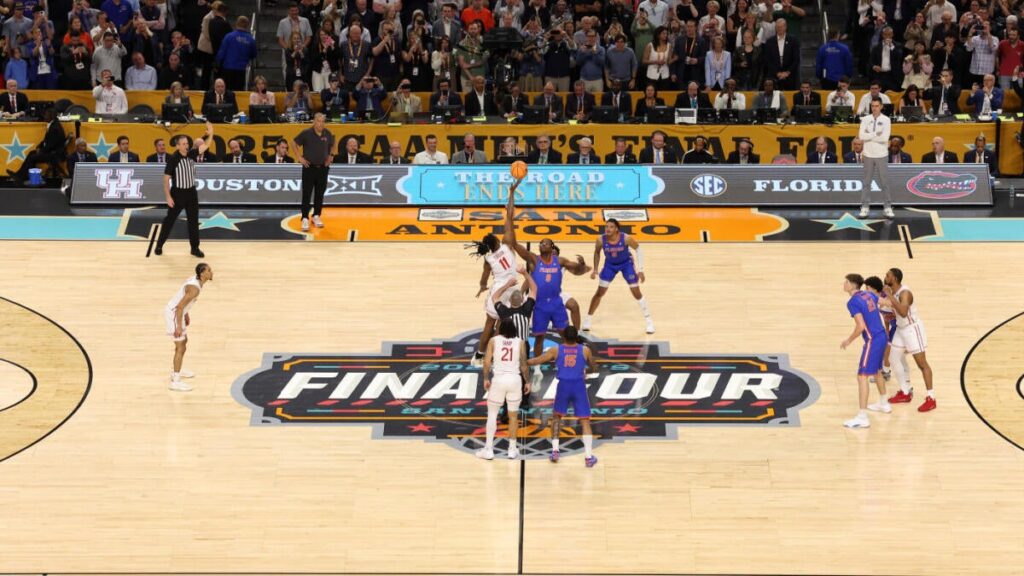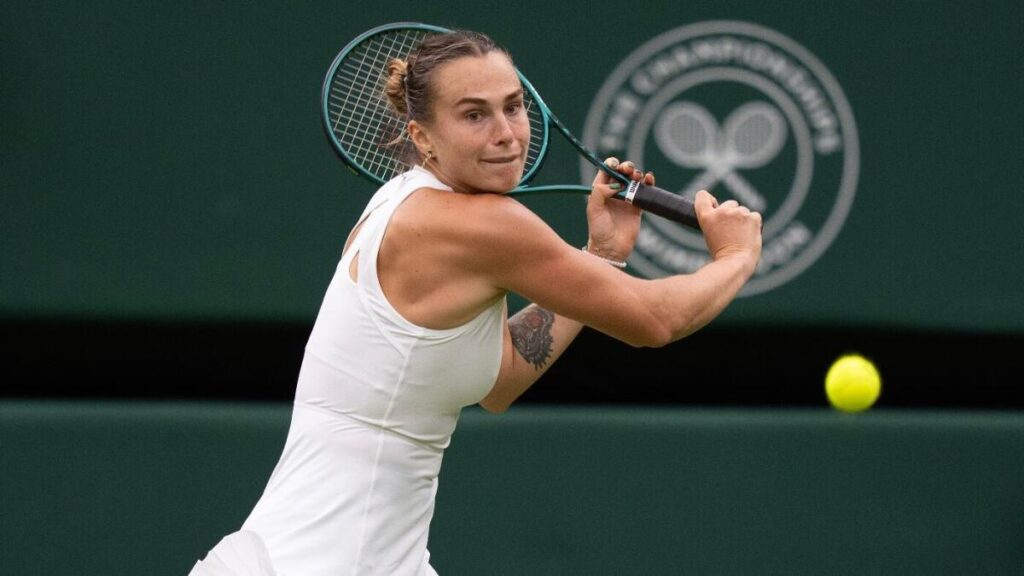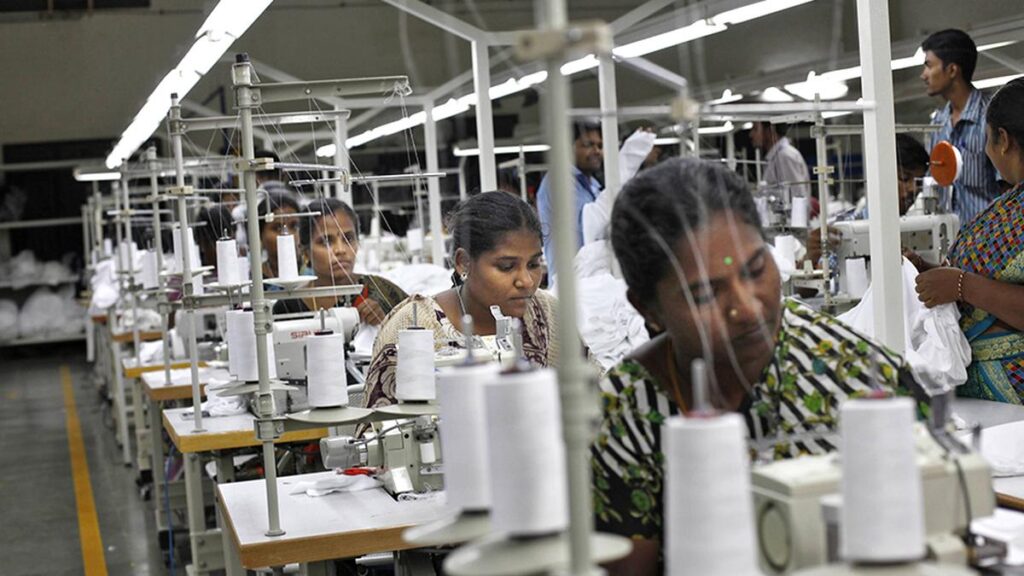After years of dealing with a sense of apathy from stakeholders, cases of alleged harassment, and the Indian Women’s League (IWL) being little more than an afterthought, the Indian women’s national football team has quietly qualified for next year’s AFC Women’s Asian Cup.
This is the first time that the Blue Tigresses have made it to the continental tournament through the qualification route. In 2003, qualifiers did not exist. In 2022, India made it to the tournament as the host.
The Crispin Chettri-coached squad topped Group B after an unbeaten qualifying campaign, which included dominant wins over Mongolia (13-0), Timor Leste (4-0), and Iraq (5-0), before grinding out a decisive 2-1 win against higher-ranked Thailand.
Three years in the making
Forward Pyari Xaxa, who top-scored for India in the qualifiers with five goals, still remembers the heartbreak she and her teammates suffered at the 2022 edition of the Asian Cup. After a goalless draw against Iran in its opening game, India was forced to withdraw from the tournament after a majority of its players tested positive for COVID-19.
“When I tested positive for COVID, it felt as if the ground beneath me opened up. I cried a lot, but I hid my tears from my teammates so that they wouldn’t get disheartened. Unfortunately, most of them tested positive as well. All the hard work had gone to waste,” Pyari recalls to Sportstar.
Cut to three years later, the 28-year-old had seemingly manifested India’s ticket to Australia, the host of the next edition.
“I’d written down my dreams in my diary about five to six years back. It’s free to dream. After we qualified this time, I ticked it off the list. Next, the World Cup remains.”
After Pyari, Sangita Basfore was India’s next highest scorer in the qualifiers, netting four times. But it was her brace in the winner-takes-all match against Thailand that capped off a journey marked by perseverance and patience. “I still haven’t mentally returned from that stadium in Thailand,” she says of the match, at the end of which she broke down in tears.
In 2021, during the home camp for the Asian Cup, Sangita suffered an ACL injury that sidelined her for nearly three years. While it took the Bengal player time to regain her rhythm and command in midfield, coach Chettri had always believed in her potential.
“He gave me the confidence to go up the pitch and have a free role in midfield,” Sangita reveals.
That decision bore fruit in the 29th minute against Thailand. Anju Tamang passed the ball to an onrushing Sangita, who took a touch and half-volleyed it into the far corner from outside the box. Her second goal – the winner in the 74th minute – was a team move straight off the training ground.
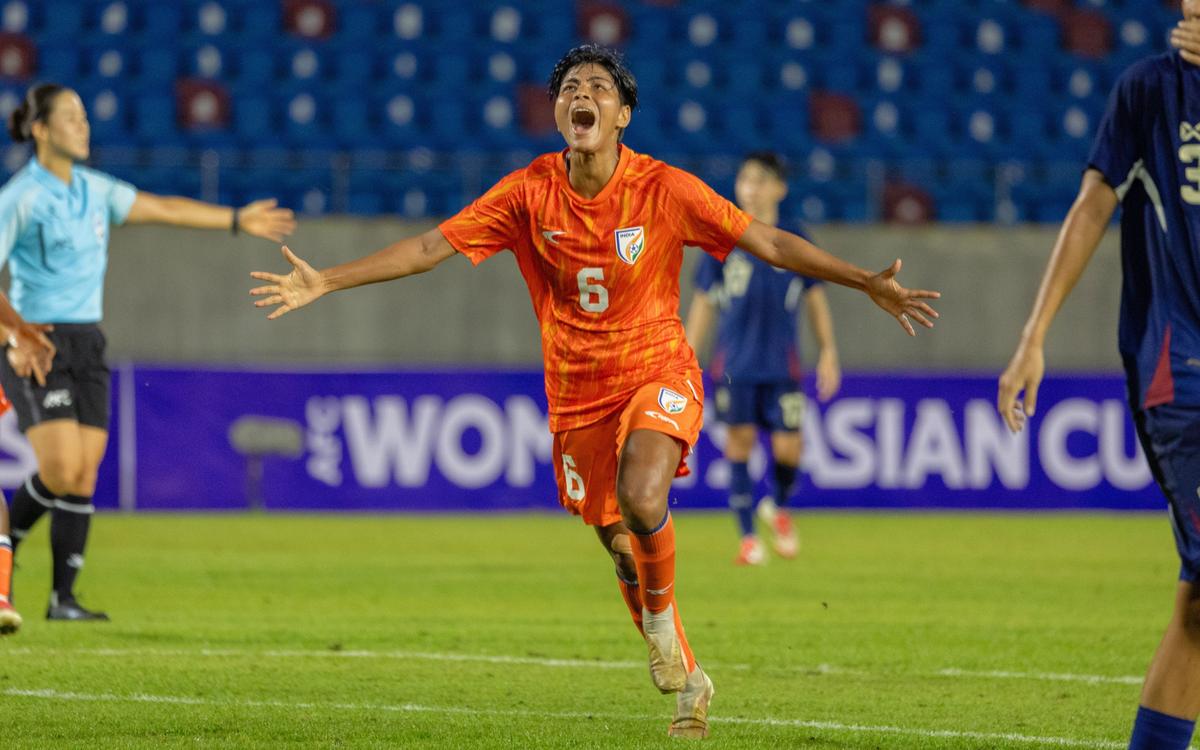
Qualifying clutch: Sangita Basfore’s stunning brace lit up Chiang Mai as India edged Thailand 2-1 in a high-stakes, do-or-die encounter.
| Photo Credit:
AIFF MEDIA
Qualifying clutch: Sangita Basfore’s stunning brace lit up Chiang Mai as India edged Thailand 2-1 in a high-stakes, do-or-die encounter.
| Photo Credit:
AIFF MEDIA
Brushing up on the basics
“The set piece goal which Sangita scored, it was done for 53 days in training and then in three matches, but it came in use in the fourth match. That’s why longer camps are always helpful,” India head coach Chettri says.
In the lead-up to the qualifiers in Thailand, the Blue Tigresses trained at the Padukone-Dravid Centre for Sports Excellence in Bengaluru for almost two months. The team used the extended camp to play domestic practice matches and take on Uzbekistan in two friendlies, each ending in a 0-1 loss.
Chettri, who took charge in late January, believes such long camps are particularly important in the context of Indian women’s football, where tactical basics are often underdeveloped.
“Women’s football and men’s football are completely different. The latter is thoroughly professional; they earn money in crores. But when it comes to women, as soon as the IWL is over, they are not that professional to take care of themselves,” points out Chhetri.
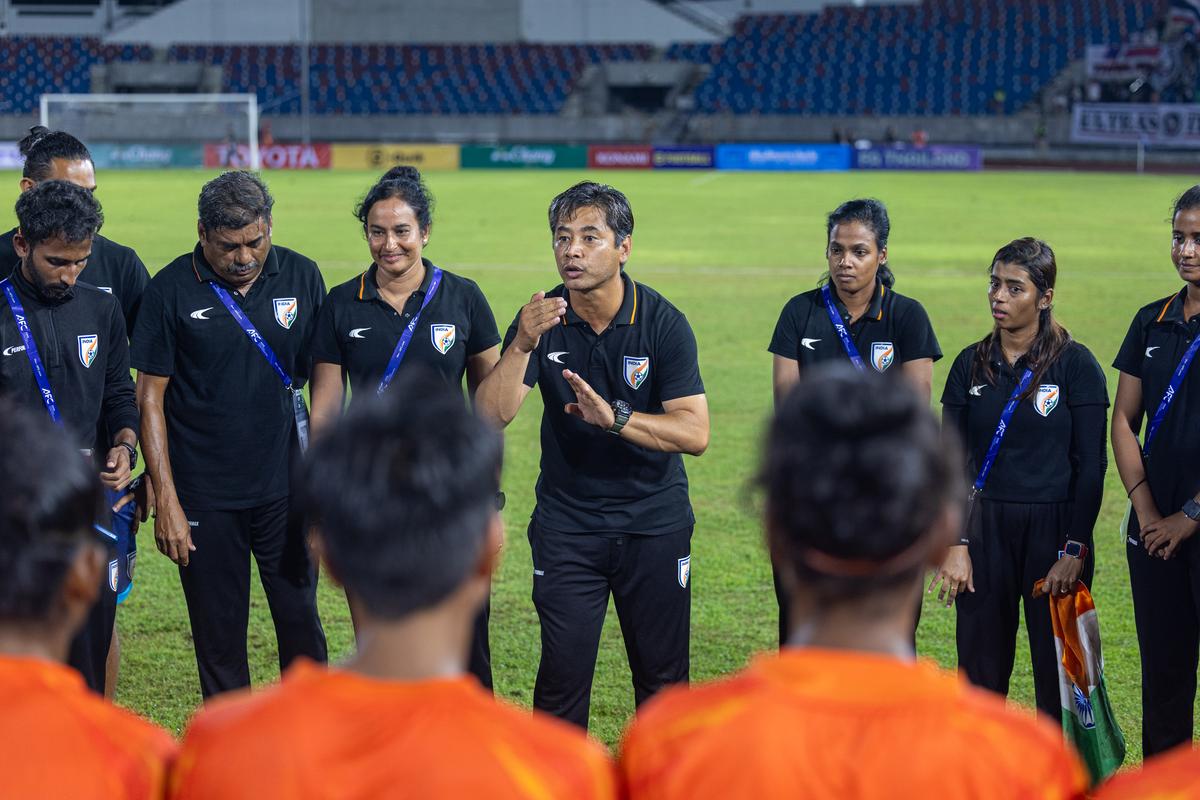
Dynamic duo: After a carousel of coaching changes, the AIFF finally struck gold in 2025 — Crispin Chhetri took charge with Priya PV as his deputy, and together, the duo has forged a winning formula.
| Photo Credit:
AIFF MEDIA
Dynamic duo: After a carousel of coaching changes, the AIFF finally struck gold in 2025 — Crispin Chhetri took charge with Priya PV as his deputy, and together, the duo has forged a winning formula.
| Photo Credit:
AIFF MEDIA
Planning ahead
Chettri’s first assignment was the Pink Ladies Cup in the UAE, where India faced Jordan, Russia, and South Korea. That tournament, along with his stint with Odisha FC in the AFC Women’s Champions League, gave him insight into where India stood in comparison to stronger sides.
“I took a younger side because I knew technically we might not be there with these teams, but physically we could be. I needed more energy on the field. Mentally, I was building a team of players which could be suitable for all kinds of matches. While I did lose some players to injury, I had the core in mind,” he explains. “I need hungry players. I need good players who make a team great, not great players who think about their names rather than the badge. I think I took a risk [taking a young side] but the federation supported me in this, and I think now we know the result.”
The 24-member squad for the qualifiers featured players like Manisha Kalyan, Grace Dangmei, Soumya Guguloth, Elangbam Panthoi Chanu, and Kiran Pisda – all of whom brought valuable overseas club experience.
“When our players go to Europe, they play at a certain intensity which we don’t get regularly in IWL. With intensity, you improve your decision-making. That helps when they come and be part of the national team and inspire others to become better.”
Room for improvement
“There were no shortcuts to success – this achievement was the result of a long-term vision and structured preparation,” an All India Football Federation (AIFF) release stated, while announcing a USD 50,000 reward for the team.
The release also cited the impact of the ASMITA Leagues – a nationwide initiative launched in 2023 – which has contributed to a 232% increase in registered women footballers over the past year.
“How many people know about it? Can we share data about it? What we have started is good, but we have to promote it, share data and be transparent. Now that everyone is aware, we have to make parents aware of it, so that good players come through,” Chhetri says.
“While the federation and States have been working towards improving the women’s game, the speed has been slow. This [qualification] will boost this process as well,” says assistant coach Priya P.V. “We need to improve scouting from the grassroots level. You can find talent in schools, colleges, and even in random pockets. We shouldn’t just stick to professional players because they have the IWL to play in,” adds the former Kerala footballer, who’s been coaching for the past 15 years.
Road to Australia – and beyond
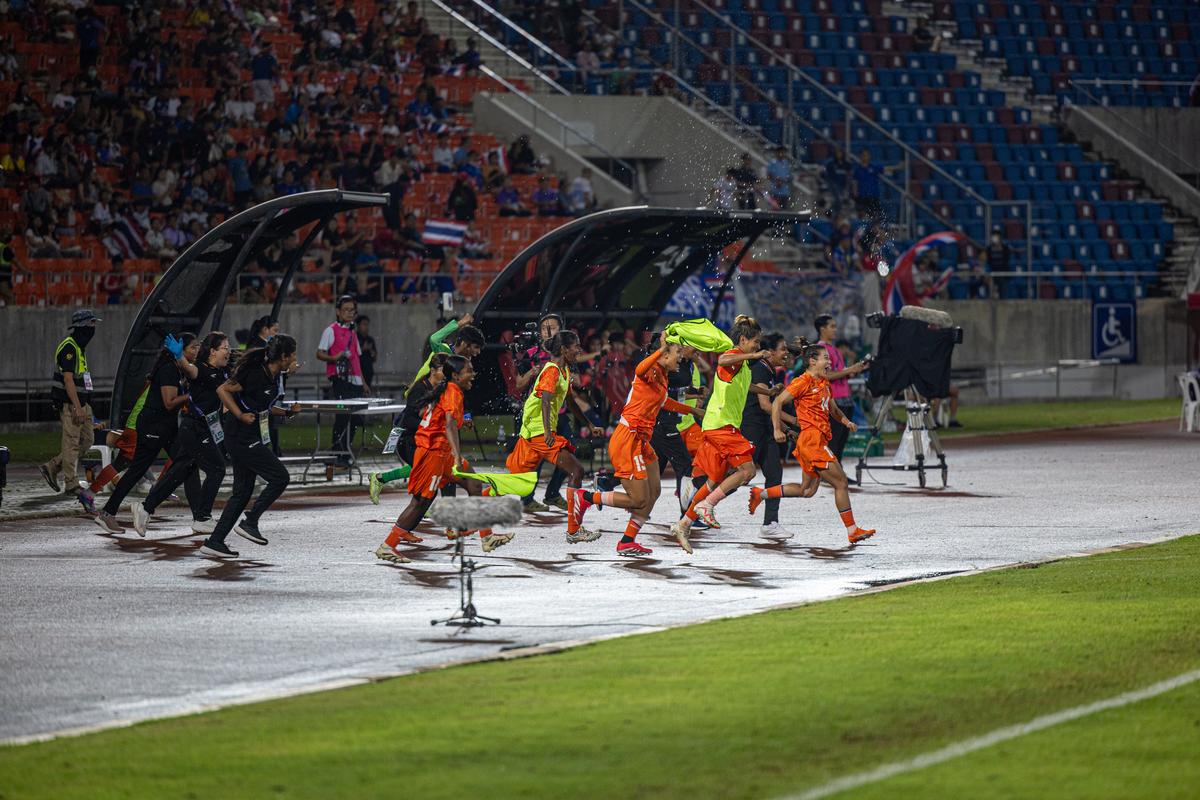
Financial boost: The All India Football Federation (AIFF) announced a reward of USD 50,000 (around ₹42.75 lakh) for the Indian women’s team in recognition of its historic qualification for the AFC Women’s Asian Cup 2026.
| Photo Credit:
AIFF MEDIA
Financial boost: The All India Football Federation (AIFF) announced a reward of USD 50,000 (around ₹42.75 lakh) for the Indian women’s team in recognition of its historic qualification for the AFC Women’s Asian Cup 2026.
| Photo Credit:
AIFF MEDIA
Next year’s AFC Women’s Asian Cup in Australia will be the final edition that serves as a direct qualifier for the FIFA World Cup. The semifinalists will earn direct qualification for the 2027 tournament in Brazil, while losing quarterfinalists will contest for two additional spots through playoffs. Teams missing out here will still have a final chance via the inter-confederation playoffs.
“I’m showing them dreams here. It’s important because when you have a dream, only then do you work towards it. After the Thailand match, I think everyone has started believing in themselves. We lacked that before,” says Chettri.
The Asian Cup will also act as a qualification route for the 2028 Los Angeles Olympics, with all quarterfinalists progressing to the second round of qualifiers.
On July 11, the AIFF unveiled a ‘roadmap’ to support the team’s preparation for the tournament. This includes an early IWL season (September to January) and an 83-day camp spread over three phases. The plan envisions “10-12 international friendlies and five to seven matches with domestic teams”.
“According to the draw we get, we can dedicate one phase of the camp to each team. By the time the AFC comes, we have a camp of around 40 days and play friendlies against different nations with different playing styles. They could be an African country, a European team with a lot of intensity, or even a Latin American team that is very skilled. This will help us adapt to all situations,” Chettri explains.
The draw will be held on July 29. Until then, the Indian team and its well-wishers can dare to dream about a successful tournament – one that could become a watershed moment for women’s football in the country.
“It’s high time we start supporting them. They should feel wanted. I think we’ll go a long way,” Chettri concludes.

